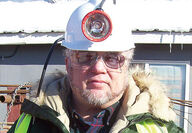Sorted by date Results 176 - 185 of 185

Looking at the world through the wrong end of the binoculars, as I often do, induces me to conclude that Alaska's mining industry is in a major state of disarray. Consider the evidence: There is a huge investment into the country for the purpose of developing our vast resource base; one-third of Alaska, an area approximately the size of California, is owned by the state and is generally open to resource development; our mineral resources are diverse, accessible, and by most...
British Columbia is home to an incredibly dynamic mining sector which is helping to lead B.C.'s economic recovery. This is due to our abundant natural resources, excellent environmental and safety standards and competitive tax and regulatory systems. Mining is an estimated $5.7 billion industry for B.C. based on 2009 production values. It was the sixth highest year for exploration spending at $154 million and more than 350 exploration projects around the province were active in 2009. British Columbia is ranked among the best...
I am a great supporter of Alaska's mining industry. How could an Alaskan not be? In 2009, Alaska's mining industry paid a total of US$12.3 million to local governments, US$35 million to the state government in royalties, rents, fees, and taxes, US$48.9 million in other state government-related revenues and US$320 million in direct and indirect payroll to a total of 5,200 industry jobs. Those are also proving to be some of Alaska's highest paid jobs. In my six sessions with the Alaska State Legislature, I have found myself on...
The first thing that makes mining a complex business is the science of finding a mine. We have over 12,000 mineral occurrences in BC and less than 20 major mines. It takes years just to locate, evaluate, permit and construct a mine. To succeed requires not only a certain temperament, but also use of the very best in technology and scientific analysis and the curiosity, intelligence and training of geologists to look and look again. All of this activity is highly regulated, which requires an in-depth understanding of...
The financial meltdown of late 2008 and early 2009 was nearly the undoing of some junior exploration companies as well as some major companies. Many of the major mining companies had to drop prospects, lay off employees, institute serious cost-cutting measures, and sell assets to keep their companies viable. A key factor was company size and continued cash flow from operations. Junior exploration companies typically do not have operating cash flows and these companies are just now seeing investments return as metal prices inc...
Despite the challenging economic times being faced worldwide, Yukon continues to be a hot destination for mineral exploration and investment. Yukon's mining economy remains strong, thanks to development work that continues at several projects in various parts of Yukon. Yukon's mineral production and mining development expenditures are expected to exceed C$200 million in 2009. Despite all the current activities and development work under way, Yukon has only just begun to tap into its natural resources. Just 4 percent of our...
Nunavut was created on April 1, 1999. The new territory and the public government, in which I am proud to be the Minister of Mines, was created as part of the largest aboriginal land claims settlement in Canadian history. The signing of the Nunavut Land Claims Agreement in 1993 marked a historic agreement between the Inuit of Canada's eastern Arctic and Canada. One of the key outcomes of that agreement was the creation of a new territory for all the people of Nunavut. This is a large territory. It is three times the size of...
The Northwest Territories has a rich and diverse commodity base. There is significant interest in the development of strategic metals, base metals and precious metals. In 2008, exploration projects were active in all these areas. Of particular note are the Gahcho Kué Diamond Project, the Prairie Creek lead-zinc project, the Thor Lake rare-earth elements project, the Yellowknife Gold Project and the NICO gold-bismuth project. Mining in Canada's Northwest Territories continues to diversify even in the face of global...
Mining in northern British Columbia has a rich history dating back over 150 years, providing jobs, supporting families and stimulating investment and economic opportunities throughout the region. Last year, exploration expenditures in the North totalled more than C$242 million, with 184 projects. As we see the signs of recovery in our economy, we are keenly aware of the importance of mining for the northern part of our province and are working to ensure it remains strong. As one of the top jurisdictions in the world for...
To understand Nunavut today, we must look back a bit further than 10 years. We must recall the settlement of the Nunavut Land Claim in 1993; where Nunavut was conceived before its birth on April 1, 1999. The claim was a far-reaching document, but I will look mainly at the provisions that relate to exploration and mining. Probably one of the most significant aspects of the claim was that it gave Inuit ownership of vast tracts of known mineral potential. This land was carefully chosen by the Inuit for its socioeconomic...